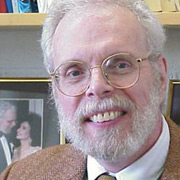Hold the AC
For six months, the research teams monitored temperatures and other conditions throughout the building. For the most part, the building behaved as expected: fresh air came in through the windows, entered the atrium, rose, and exited through the ceiling vents. But measurements on some floors near the atrium opening showed air moving toward the side windows instead of away from them.
So the researchers brought other tools to bear. They did carefully controlled experiments using a one-twelfth-size replica of the Luton building, equipped with heating elements to represent people, computers, and so on. And they created computer simulations that—based on incoming winds, indoor heat sources, and other factors—can calculate airflows between rooms, the atrium, and outside as well as conditions within single rooms.
Their findings explained the unexpected measurements in the full-scale building. Because of temperature differences and buoyancy effects, cooler air can at times slip over a partition at the edge of the atrium and enter an office, moving along the floor and then quickly rising and heading out along the ceiling—a local reverse eddy.


